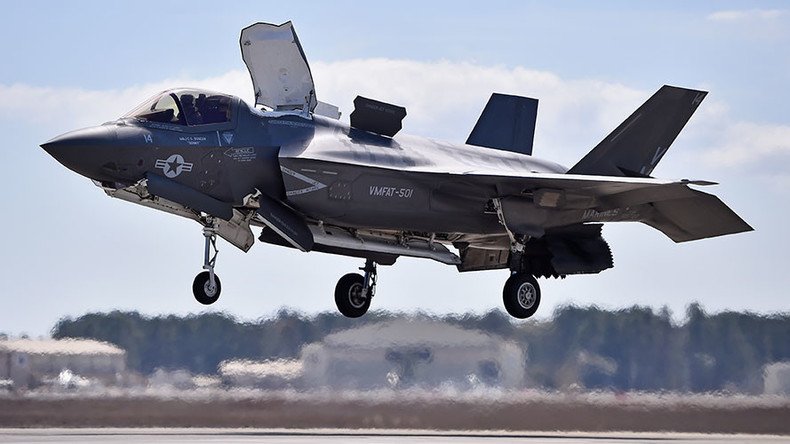F-35 has 276 deficiencies and counting, unfit for combat operations – Pentagon report

The F-35 stealth fighter jet suffers from hundreds of problems and won’t be fully combat-capable before 2020, says a scathing report from the Pentagon’s top evaluator. New issues keep cropping up, and fixing them all may cost over $1 billion.
Dr. Michael Gilmore’s damning assessment is part of the massive annual report for fiscal year 2016, and his 62-page dossier devoted to the F-35 paints a grim picture of America’s much touted,futuristic Joint Strike Fighter. The program, which began in 2001, was supposed to deliver a fifth-generation jet serving the needs of the Air Force, the Navy and the Marine Corps, achieving savings through a modular design. Instead, it is 70 percent over initial cost estimates and years behind schedule.
Dr. Gilmore, the Pentagon’s director of operational test & evaluation (OTE) under President Barack Obama, is leaving the Department of Defense as part of the regular change in politically appointed officials. Though F-35 officials have continued to insist the jet is doing just fine and that the problems found in operational testing were being fixed rapidly, Gilmore’s final report makes it clear that he doesn’t believe their reassurances.
“The Services have designated 276 deficiencies in combat performance as ‘critical to correct’ in Block 3F, but less than half of the critical deficiencies were addressed with attempted corrections,” says Gilmore’s report, referring to problems in the F-35’s software. “Deficiencies continue to be discovered at a rate of about 20 per month,” the report added.
“Much more testing is needed to assess the cybersecurity structure of the air vehicle and supporting logistics infrastructure system,” the report says, “and to determine whether, and to what extent, vulnerabilities may have led to compromises of F-35 data.”
Worse yet, the program is trying to skip many of the tests and declare the systems development phase over early, shifting the testing to the Initial Operational Test and Evaluation (IOT&E) process starting in August 2017, the report noted. Rushing the tests means shifting the risks onto operational testing, follow-on modernization, and to the pilots intended to fly the planes into combat.
The F-35 program office "has no plan to adequately fix and verify hundreds of these deficiencies using flight testing within its currently planned schedule and resources," Gilmore wrote.
“Multiple problems and delays make it clear that the program will not be able to start IOT&E with full combat capability until late CY18 or early CY19, at the soonest,” meaning 2018 and 2019, respectively. Finalizing the systems development phase would cost around $500 million, Gilmore noted, adding that the Cost Assessment and Program Evaluation office’s estimate ranged up to $1.125 billion.
In addition to software trouble, the jet is plagued by structural problems. For example, the connection between the vertical tail and the airframe is wearing out much faster than expected, while arresting hooks are fraying after only one use. Engine nacelles are overheating under certain flight tests, horizontal tail continues to suffer heat damage, and the “excessive, violent” oscillations during catapult launches of the naval F-35C version present a safety concern for pilots.
Tests of the pilot escape system showed a risk of serious neck injury or death for pilots weighing less than 136 pounds (61kg), who remain restricted from flying the F-35.
On the maintenance side, technicians are required to physically connect the Portable Maintenance Aid (PMA) laptops to the aircraft in order to conduct most activities. If the PMA fails to connect to the aircraft properly and technicians unplug it prematurely, the laptop cannot connect to another aircraft until it is reset by an Automatic Logistics Information System (ALIS) administrator, “which can be a lengthy process.”
Given all that, the Department of Defense should consider committing to a “block buy” of the jets, since in their current state the F-35 does not fit the legal requirements and the Pentagon’s “fly before you buy” approach to purchases, Gilmore’s report concluded.
The F-35 is a single-seat, single-engine aircraft that comes in three versions: the F-35A for the Air Force; the F-35B for the US Marine Corps; and the F-35C for the US Navy. It is being developed by Lockheed Martin, with additional funding from Australia, Canada, Denmark, Italy, Norway, the United Kingdom and Turkey. Israel and Japan have also placed orders for the jet.















